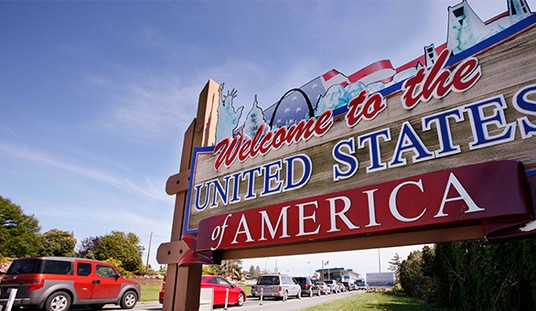In a new report, the Centers for Disease Control (CDC) attempted to link firearms with violence, especially against children. The authors wrote: “Gun violence historically has been a problem in cities, and youths have been affected disproportionately.”
The gun control formula equates guns with violence in the reader’s mind, thus the term “gun violence.”
CDC history lesson
The CDC has long supported gun control. Researcher David Kopel wrote about CDC’s history of funding anti-gun research:
Finally, in 1996, Congress cut off gun control funding for the CDC — mainly because the NRA demonstrated to legislators the CDC was buying political misinformation rather than science.
Since then, they’ve attempted to reframe their agenda into “gun safety.” In the early 2000s, the CDC performed national gun ownership surveys. The survey’s codebook had interviewers asking people if firearms in the home were loaded and locked. The assumption was that a loaded, ready firearm was dangerous.
But CDC fatal injury data show that right-to-carry (RTC) states — where law-abiding civilians carry loaded handguns in public — averaged 16.3% lower homicide rates than restrictive-carry states.
More interesting, CDC data show that between 2000 and 2007, black homicide rates averaged 24.9% less in RTC states. Considering that American gun control policy historically coincides with racist oppression, this data indicate modern gun control is a questionable policy.
Today’s “youth” and violence
The CDC report focuses on homicide victims ages 10-19, and uses the term “youth” 30 times in a report about 1,600 words long.
Numerous sources have concluded that street gangs have a significant influence on violent crime. A U.S. Department of Justice (DOJ) report noted:
At present, more than 20,000 gangs consisting of approximately 1 million members exist in the United States. Gangs are present in all 50 states, the District of Columbia, and all U.S. territories.
University of South Florida researchers reported a 20% increase in law enforcement agencies reporting gang problems between 2002 and 2005, with most of the growth in suburban and rural counties across America.
The DOJ reported: “The age range of youth gang members is about 12 to 24; membership is expanding at the top and the bottom of the age range, but mainly at the top.” The DOJ estimates that in 2006, juveniles (under age 18) comprised 36.5% of gang members, a 17.7% increase from 2002.
Over the Memorial Day weekend, numerous “youth” violence incidents occurred.
Massachusetts State Police dispersed 1,000 “youths” for fighting from Carson Beach in South Boston. The Boston Globe, which used the term “youth” 11 times in their article, reported “the troublemakers were mostly 14 to 19 years old” and that many were “gang members.”
In Long Beach, New York, police had to “quell a beach melee involving ‘hundreds’ of “young people.”
Charlotte, North Carolina, experienced “many fights” and one person was killed. “In all, 70 people were arrested — including 15 juveniles.” Many flashed gang signs.
In Nashville, a water park shut down after a “significant number of kids grew impatient” and started causing trouble, including “several fights.” WTVF video shows that most of the trouble involved what CDC calls “youth.”
For the children!
The CDC report covers “youths age 10-19 years.” Anti-rights researchers include real children (under age 15) with older teenagers and young adults, obfuscating this by calling them “youths.” Few children get murdered, but the image of thousands of children getting shot evokes readers’ strongest emotional response.
By mixing children ages 10-14 with older juveniles and young adults more likely to be in gangs, they leave room for misinterpretation. In 2007, there were 2,161 firearms homicide victims ages 0-19. Some interpret that as “6 kids a day murdered by firearms.” Of that total, 264 were children. While still serious, “0.7 children a day” doesn’t sound as dramatic.
In 2007, CDC reported that the firearms homicide rate for true children — under age 15 — was 0.43 (all rates per 100,000 population). For ages 10-14, it was 0.76; for ages 15-17, 5.93; for ages 18-19, 13.19.
Next, CDC didn’t report trends, which indicate decreasing violence. Since 1993, when homicide rates peaked, CDC data shows that child firearms homicide rates declined 54.7%, compared to a 41.1% decline for ages 15+.
Nationally, firearms homicide rates declined more than non-firearms rates (see table below).
Firearms homicide rates for children, already low at 0.95, dropped 54.7% between 1993 and 2007, to 0.43. The smallest rate decrease was in the population group outside this CDC study, age 20+. Children and juveniles saw greater-than-average rate decreases.
Interestingly, firearms homicide rates decreased faster than non-firearms rates, regardless of age group.
Firearm suicide rates decline
Firearm suicide rates, discussed in the CDC report, show similar trends. The child firearm suicide rate was 0.09 in 2007, down 73.6% since 1993. There were no firearms suicides for ages 0-9 in 2007; the rate was 0.26 for ages 10-14. Firearms suicide rates declined much faster than non-firearm suicides for children (see table below).
For ages 0-19, non-firearms suicide rates are higher than firearms rates, 1.19 and 0.82, respectively. Since 1993, the overall firearm suicide rate declined 23.2%, but the non-firearms rate climbed 16.3%. This increase included all age groups except children. If these trends continue, non-firearms rates may comprise over 50% of all suicides when the CDC releases their 2008 mortality data (see graph below).
While any child’s death is an important concern, these CDC data indicate that when it comes to firearms-related violence, children have become much safer over time.
2001-2 CDC gun ownership data: more guns, less homicide
Though firearms homicide and suicide rates have declined since 1993, one question may remain: Are reduced firearms rates due to reduced firearms inventory?
The CDC performed gun ownership surveys in 2001 and 2002, estimating the percent of gun ownership (PGO) by state. When PGO was collated with CDC homicide data, certain trends appear: As gun ownership increases, homicide rates decrease.
Both annual datasets were divided into quintiles, with quintile 1 containing states with the lowest PGO, and quintile 5 containing states with the highest PGO. The graph below shows the trends for each year by quintile. Spearman’s values were -0.60 in 2001 and -0.50 in 2002, both moderate negative correlations (more guns, lower homicide rates).
After isolating firearms homicide rates, these trends improve slightly: Spearman’s values were -0.60 for 2001 and -0.70 for 2002.
Regarding firearms homicide rates, Blacks benefited the most from living in high-PGO states. Spearman’s values were -0.90 in 2001 and 1.00 in 2002, strong and perfect negative correlations, respectively (more guns, lower homicide rates).
Comparing quintiles 1 and 5, blacks living in the highest PGO states experienced about 50% the total homicide and 45% the firearms homicide rates of blacks living in states with the lowest gun ownership.
Data from the Bureau of Alcohol, Tobacco, Firearms, and Explosives indicate that between 1993 and 2007, about 79 million firearms were sold in the U.S. About 35 million of these were handguns. During the same time, CDC data show the national firearms homicide rate declined 40.4%, and the firearms suicide rate declined 23.2%.
The CDC persists in hiding their anti-rights agenda within their “gun safety” research, but they haven’t bothered to learn from their own data.
(Homicide and child mortality data compiled from CDC’s WISQARS Fatal Injury Data into Excel workbooks; available to qualified researchers.)













Join the conversation as a VIP Member